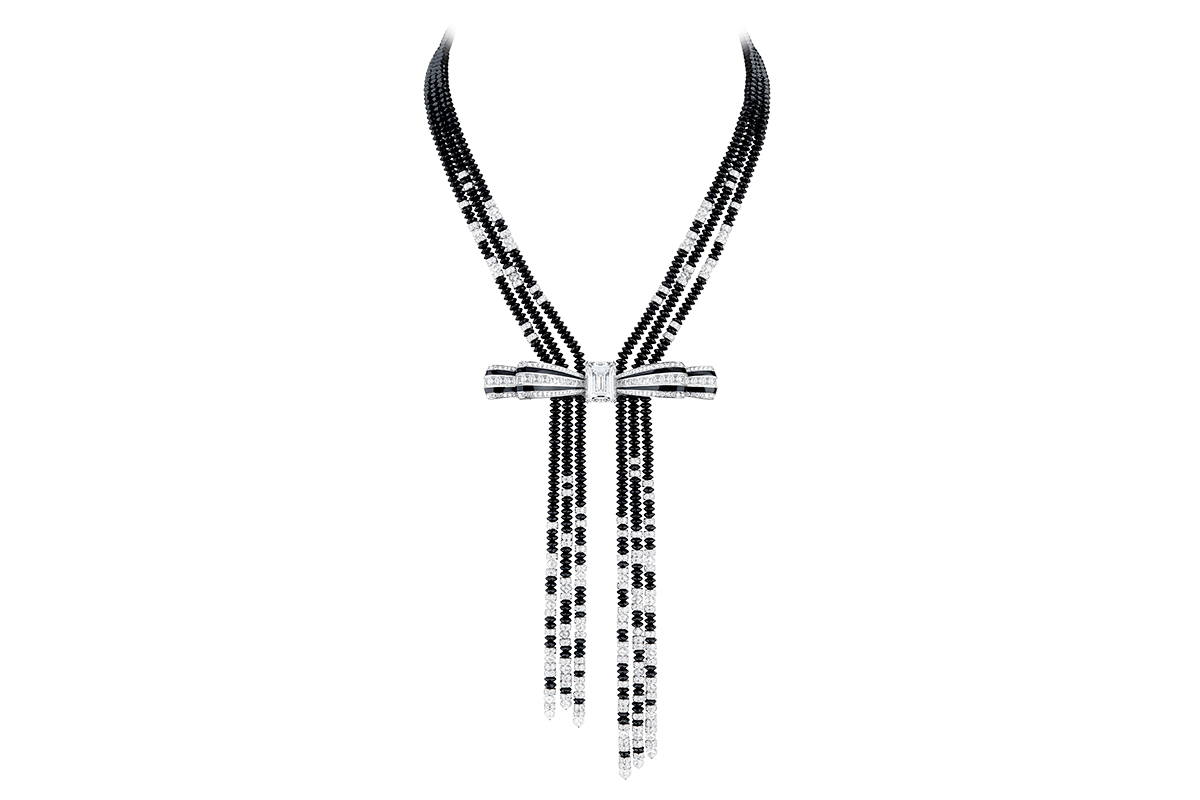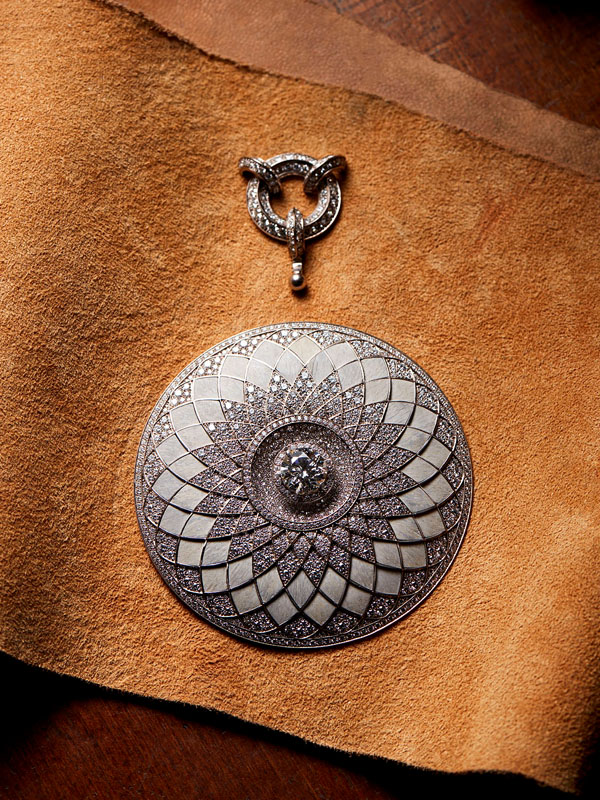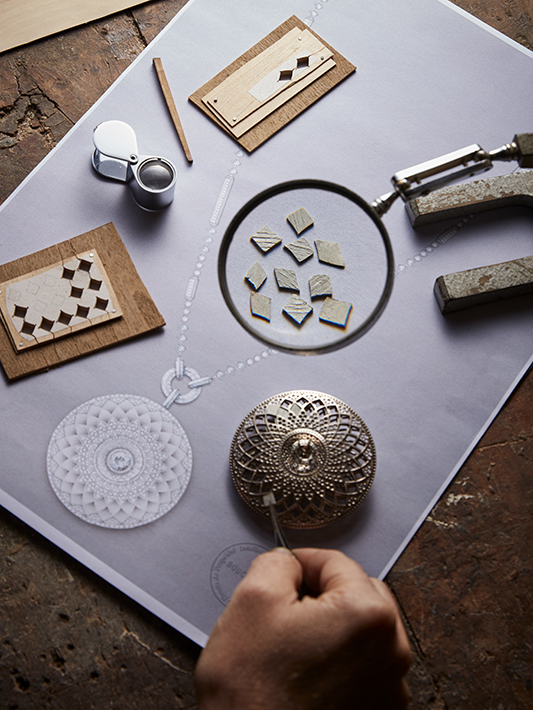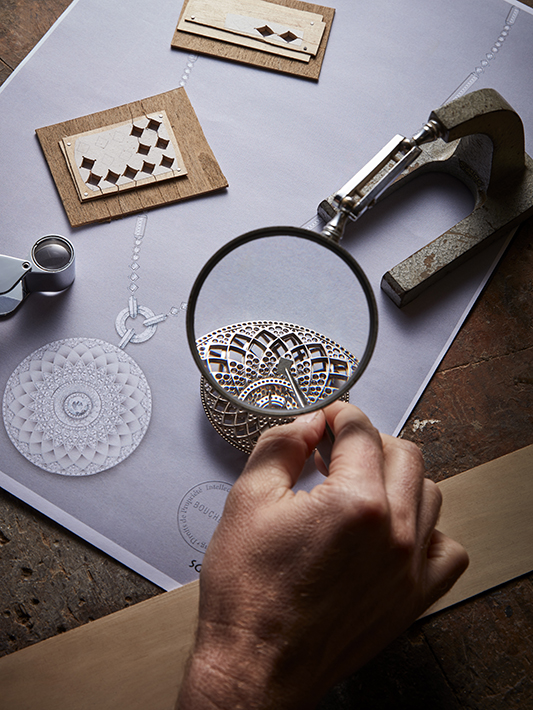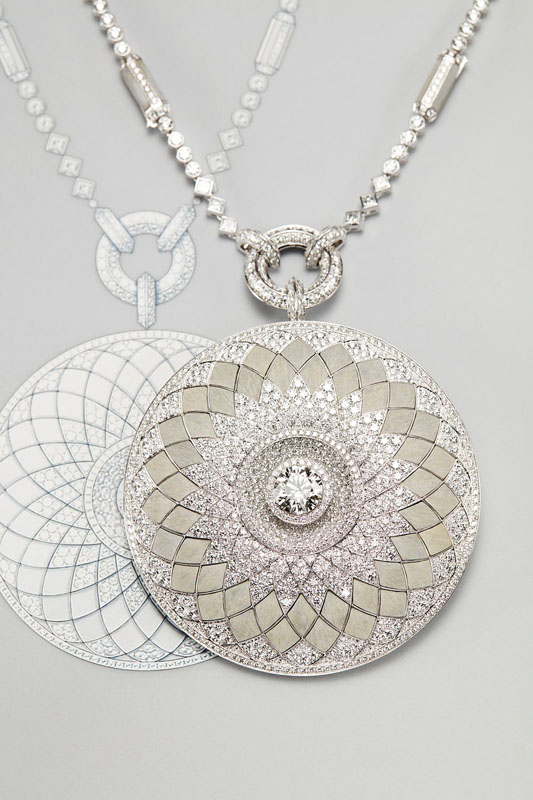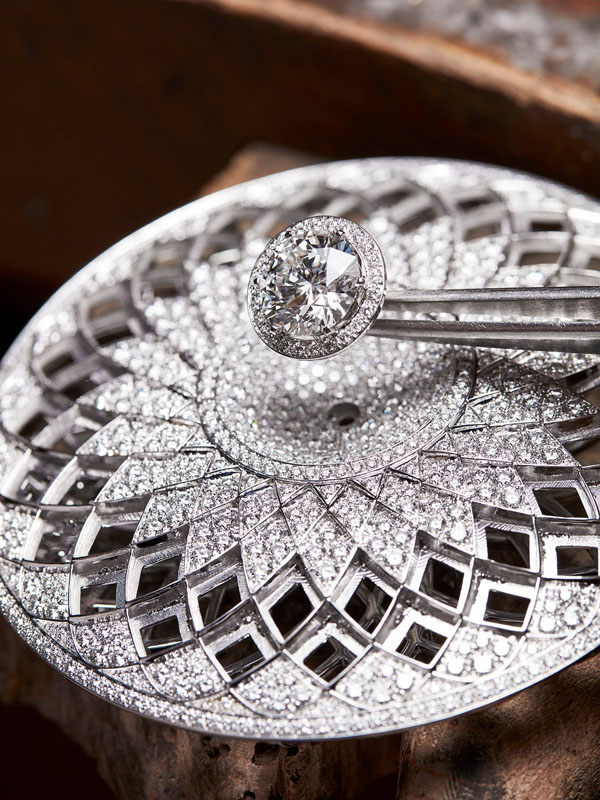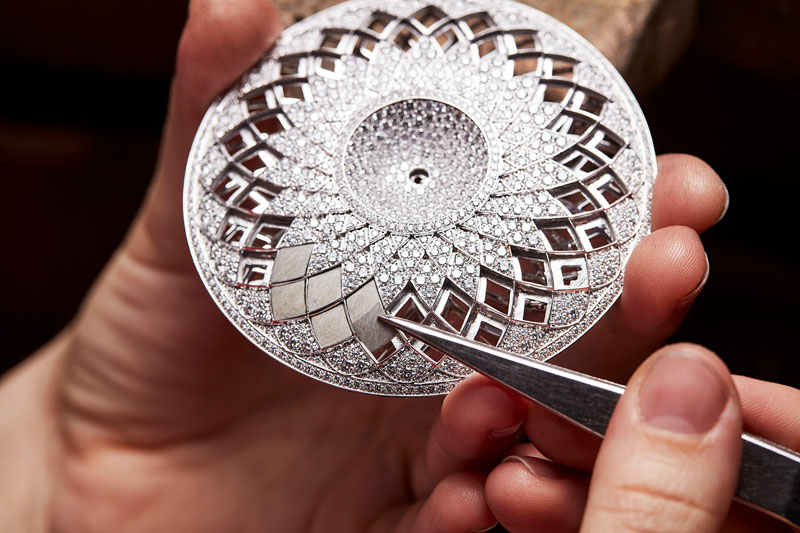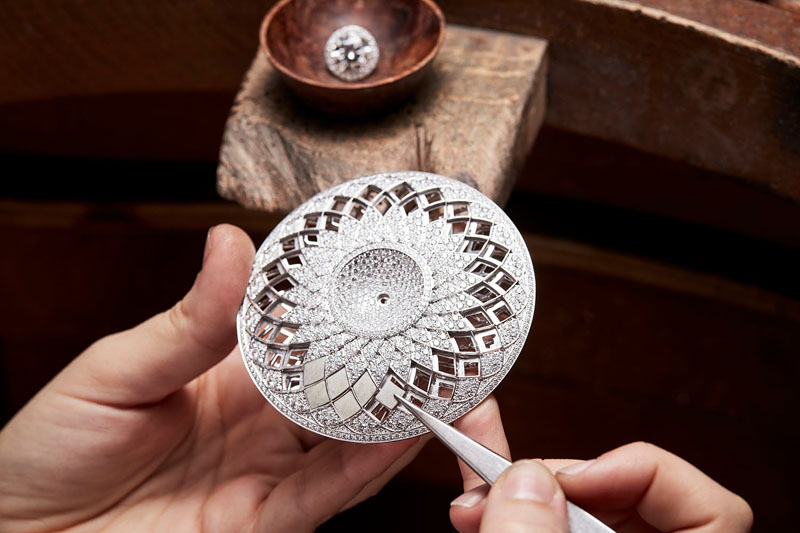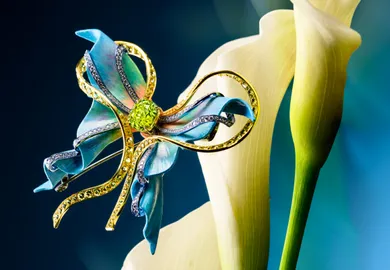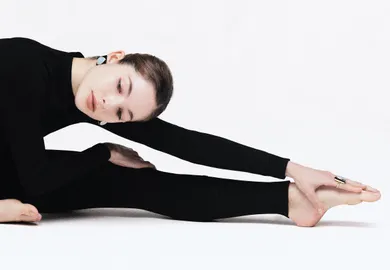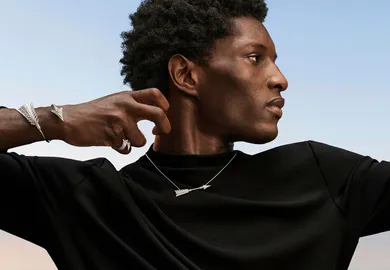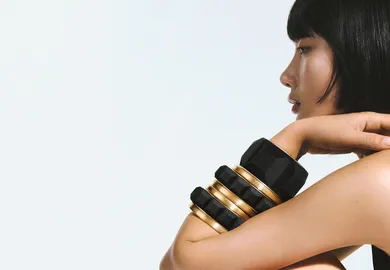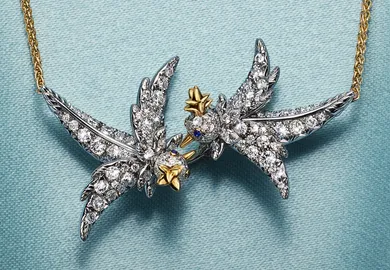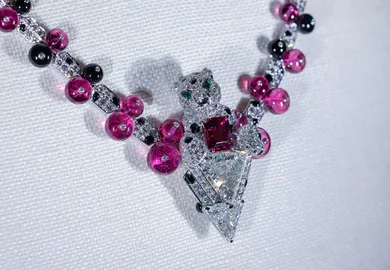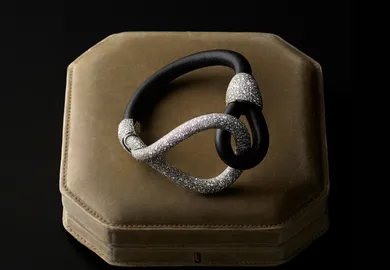
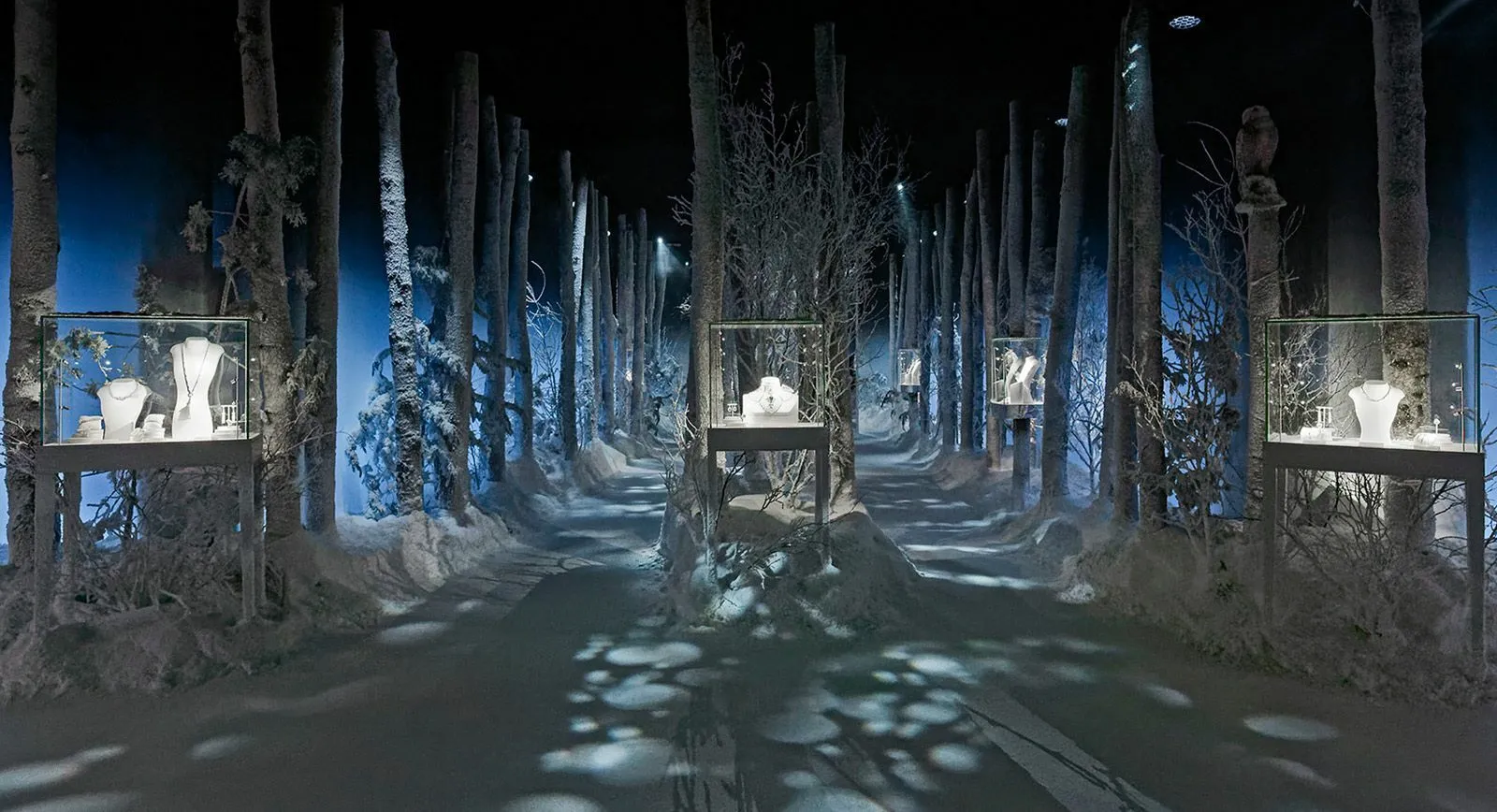
Hiver Impérial: Boucheron Looks to Imperial Russia for Inspiration with Its New High Jewellery Collection
The first French jewellery maison to set up shop in Moscow, in 1897, was Boucheron. This marked the starting point of a rich shared history between the maison and Imperial Russia. Not long ago, Boucheron began a new chapter: its Hiver Impérial (Imperial Winter) collection, inspired by the endless snowy plains and traditions of the Far East. It left a lasting impression on me, as did the snow forest décor that was specially designed for the presentation of the collection during Paris Haute Couture week.
On this jewellery journey, Boucheron explores three fundamental themes, all of which are synonymous with the maison: couture, architecture and nature. Les Femmes Boréales (the Northern Women) sing of the beauty of Russian women in winter. L’Anneau d’Or (the Golden Ring) exposes the beauty, as seen from above, of Russia’s cathedrals and bell towers, located throughout Russia’s ancient imperial towns. La Lumière de Nuit (the Night Light), meanwhile, celebrates nature in the Arctic Circle illuminated by the Northern Lights. Diamonds, pearls and precious stones that fall within the light blue colour palette are used to invoke the geometric harmony of snowflakes that cover the facades of houses, roofs and animals’ fur with frost.
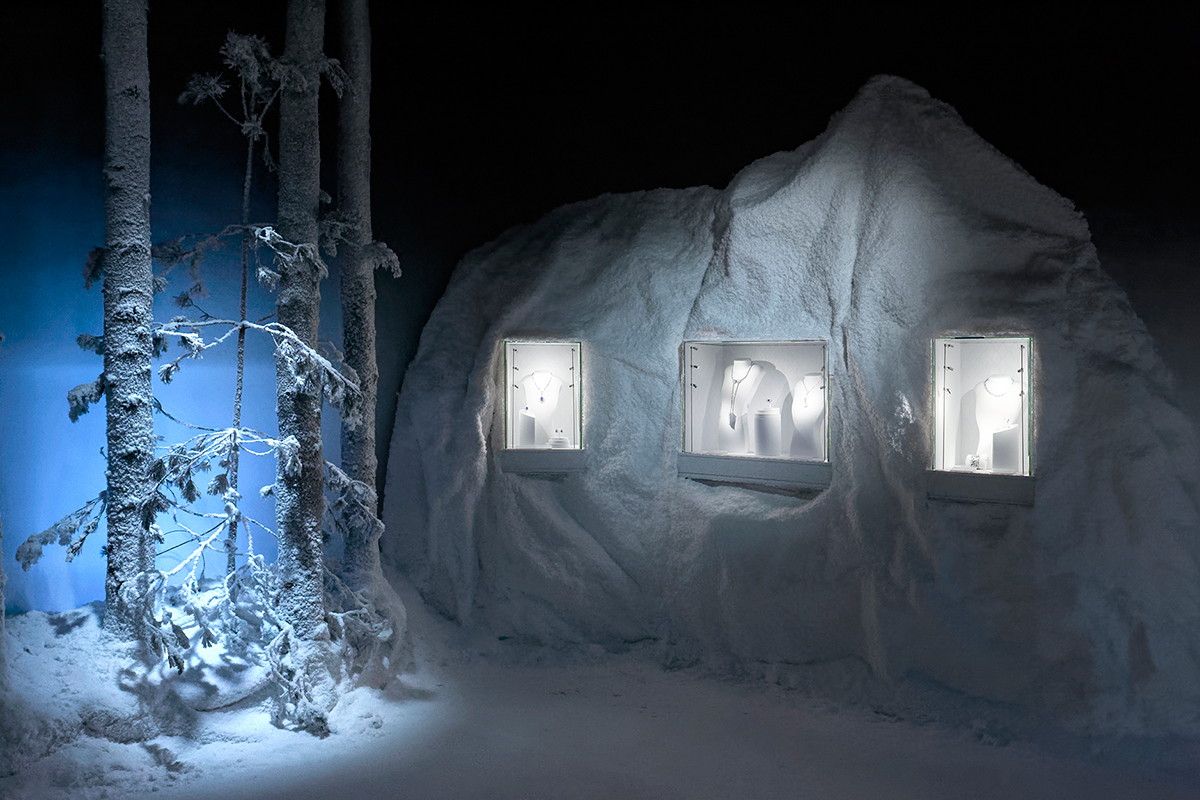
The Imperial Winter collection by Boucheron
Snowflakes were first used as a design concept by Boucheron on brooches in 1898. In 1906 and 1912, they were used again on two unbelievable necklaces for one of their Russian clients: Barbara Kelch, granddaughter of the railway magnate Ivan Bazanov. Now, the same motif is playing a role in a sub-collection of La Lumière de Nuit (the Night Light). The imperial snowflake of the new line appears in the Flocon Imperial necklace, like an echo of the brand’s former creations, adopting nature’s perfect geometry for this jewellery masterpiece.

The Flocon Imperial necklace by Boucheron
To create the effect of semi-transparency, the jewellers have chosen rock crystal to create the relevant component parts of a snowflake. Light passes through them creating the illusion of “floating” diamonds that cover the white gold underneath the rock crystal. The real wow factor is, following tradition, the multi-functionality of the piece: the “snowflake” has seven detachable elements which can form a ring with a 5.2 carat diamond, a pair of earrings, a brooch and a hair accessory.
Also included in this line are watches and rings in the shape of winter wildlife: a husky slyly looks at a Burmese sapphire weighing 31.21 carats, through which the time glints, and the watch hands are adorned with a polar bear balancing on an ice float of aquamarine weighing 13.49 carats. They are joined by rings shaped like lynxes, vixens, owls and racoons. Two unique cocktail rings were made using titanium. These bombay-styled jewels with rock crystal and diamonds are split in half by the outline of hanging icicles.
Les Femme Boréales (the Northern Women) drew their inspiration from traditional dress and imperial jewels, luxuriously seeped in pearls, diamonds and precious stones. It should be said that, as far as the maison Boucheron is concerned, pearls are intimately linked with multiple stories about Russian tsars, some of which are about love. For example, Tsar Nicholas II gave his bride a Boucheron pearl and diamond coronet as a wedding present.
One of the most magnificent pieces in the Imperial Winter collection is the Baikal necklace made of 2,000 Akoya oyster pearls. It owes its name to the huge aquamarine weighing 78.33 carats, a stone which bears an uncanny resemblance to the transparent blue waters of Lake Baikal. The oval stone, mined from Santa Maria, is complemented by teardrop moonstones inlaid with colourless diamonds. The designers at Boucheron have paid due attention to both the front and the back of the necklace, adding an aquamarine corset bow to the reverse side of the piece which allows the wearer to alter the length howsoever they please, achieving the perfect shape for them.
The final sub-collection is L’Anneau d’Or (the Golden Ring). This is a true kaleidoscope of cathedral domes, gables and mosaics. A necklace, rings and earrings are all distinguished by their graphic designs and the colours that realistically convey the palette and tone of the objects that inspired them.
For the Rostov jewellery line, for example, the craftsmen were inspired by the geometric medallions decorated with pearls, colourless diamonds and delicate motifs that were so popular in the early 20th century. Thus arose the idea of creating a medallion, which looked like the bird’s eye view of a cathedral, on a chain. This ensemble can be worn in four different ways: as a long necklace, a choker, without the medallion altogether or as a brooch.
Boucheron has not neglected its love for experimenting with new materials, on this occasion going so far as to use wood, characteristic of Imperial Russian buildings, to make some of its pieces. This is not an entirely new idea of course: in the 1970s, the maison often used it to create powder cases, fans and cigarette cases. This time, the wood used has a different appearance with its silver patina finish.
Credit should be given where credit is due, and I am once again pleasantly surprised by the audacity of the French jewellery brand, both its use of innovative materials and its fresh take on common themes. Welcome to the natural wonder of the northern hemisphere, Boucheron!

WORDS
Katerina Perez is a jewellery insider, journalist and brand consultant with more than 15 years’ experience in the jewellery sector. Paris-based, Katerina has worked as a freelance journalist and content editor since 2011, writing articles for international publications. To share her jewellery knowledge and expertise, Katerina founded this website and launched her @katerina_perez Instagram in 2013.





























